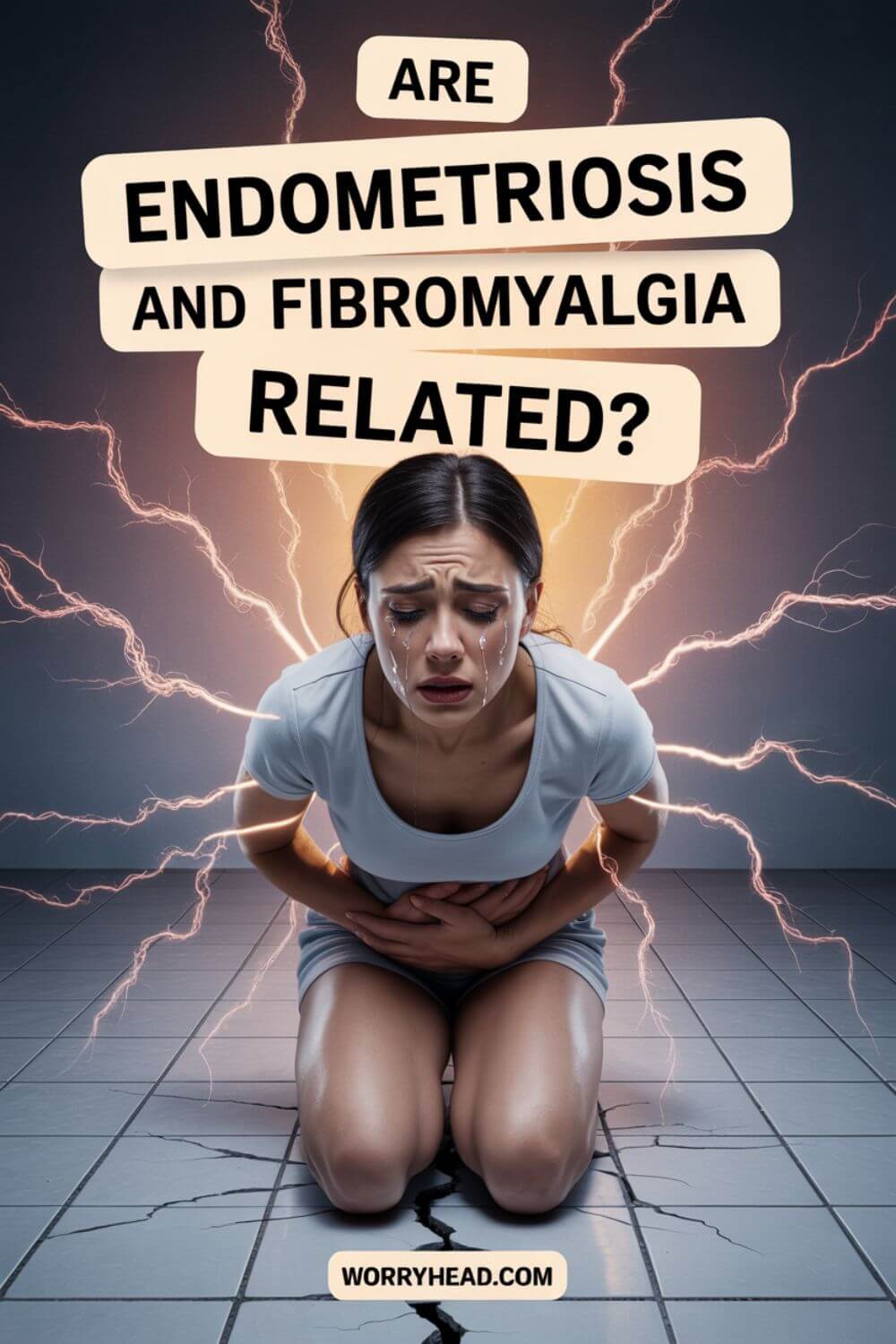Are Endometriosis and Fibromyalgia Related?
- Have you ever asked this question: Are endometriosis and fibromyalgia related?
- And if you did, then how could this connection change your relationship forever?
- Have you noticed her pain shifting like shadows, one moment from her pelvis, the next from her muscles?
- Have you felt helpless but desperate to understand?
Yes, these two chronic illnesses are often connected, sharing symptoms like widespread pain, fatigue, and inflammation, and this overlap can make her daily life and your role as her partner far more complex.
When my wife was diagnosed with endometriosis years ago, we thought we finally had answers. But the pain didn’t stop, it only moved, changed shape, and grew heavier. Then came the fibromyalgia diagnosis, and suddenly, we weren’t dealing with just one invisible battle, but two that intertwined in ways that even some doctors dismissed.
If you’ve felt the same confusion, fear, and need to truly understand, keep reading, because this connection isn’t just medical; it’s deeply personal, and it can shape the way you love, support, and stand beside her.
- Understanding the Link: Are Endometriosis and Fibromyalgia Related?
- Talk to Her About the Endometriosis–Fibromyalgia Link
- What Science Says on Endometriosis–Fibromyalgia Overlap
- Emotional Impact When Two Chronic Illnesses Collide
- Misconceptions on Endometriosis–Fibromyalgia Connection
- How Does the Link Between Both Affect Daily Life?
- Signs She May Have Endometriosis and Fibromyalgia
- Researching the Link Without Overwhelming Your Partner
- Inflammation Connection in Endometriosis and Fibromyalgia
- Why Some Doctors Dismiss the Link & How to React?
- How Awareness Improves Your Role as a Partner?
- Conclusion on the Endometriosis–Fibromyalgia Connection
Understanding the Link: Are Endometriosis and Fibromyalgia Related?
When I first heard the question are endometriosis and fibromyalgia related, I didn’t realise how deeply it would change the way I saw my wife’s pain. These conditions don’t just sit side by side – they overlap, tangle, and create a heavier burden than either illness alone.
Living with one chronic illness is already exhausting. When two coexist, the physical toll is magnified, and the emotional strain seeps into every corner of life. I’ve watched my wife go from pushing through her endometriosis flare-ups to barely having the energy to get out of bed because fibromyalgia decided to join the fight.
The connection often lies in how both conditions involve chronic inflammation, nervous system sensitisation, and widespread pain. But for us as partners, the science isn’t the hardest part; it’s the reality of watching someone you love face a storm you can’t stop.
I quickly realised that my role wasn’t to fix her but to understand her, to learn the patterns of both illnesses, so I could make life less overwhelming.
It’s not just about recognising pain; it’s about anticipating it. If she’s in an endometriosis flare, fibromyalgia symptoms can flare too, fatigue becomes crushing, pain spreads, and even her mental health takes a hit. This is where patience becomes more than a virtue; it becomes a lifeline.
I’ve learned to make adjustments without her having to ask. If I know she’s on the edge of a flare, I’ll take on more around the house, make sure meals are ready, and create a calm space for her to rest. It’s in those quiet, thoughtful acts that love becomes action.
Researching the link between these conditions helped me see that we’re not alone in this. Many couples face the same struggle, feeling frustrated at the lack of awareness in the medical community.
Some doctors still dismiss the overlap, which can leave both partners feeling unheard. That’s why it’s vital for us, as men, to educate ourselves, not just so we can advocate for her in appointments, but so we can offer the kind of emotional support that says, I see you, I believe you, and I’m here for you.
Understanding this connection has changed our relationship. It’s made me slower to judge, quicker to listen, and more intentional in every part of our life together. It’s also made me realise that while I can’t take her pain away, I can help carry the weight it brings.
Once you grasp how these two illnesses intertwine, you stop seeing them as separate problems and start treating them as one shared journey, a journey where your presence, patience, and understanding can make all the difference.

Talk to Her About the Endometriosis–Fibromyalgia Link
When I first tried to bring up the endometriosis–fibromyalgia link with my wife, I worried it might sound like I was trying to diagnose her or tell her something she already knew. But I realised this wasn’t about facts, it was about connection. Talking to her about it meant letting her know I was paying attention, that I cared enough to notice patterns in her pain and fatigue, and that I wanted to understand what her days really felt like.
Conversations like this can’t be rushed. Sometimes, I’d start with something as simple as, “I’ve been reading about how these two illnesses can overlap. Does that sound familiar to you?”
It wasn’t about proving a point; it was about creating a safe space for her to share without feeling judged or dismissed. When she did open up, I made sure to listen fully, not to jump in with quick fixes, but to hear her truth.
I noticed that when she felt believed, she spoke more openly about what her pain was like, how it shifted from endometriosis cramps to fibromyalgia’s deep, aching soreness. The more she talked, the more I understood how unpredictable her days could be.
That understanding changed how I approached everything, plans, expectations, and even the way I handled moments when she cancelled something at the last minute.
This kind of conversation isn’t a one-time event. It’s something we revisit, especially when new symptoms appear or old ones worsen. It’s about showing up consistently, even when there are no clear answers. And it’s about being the person she can come to when the world has already told her, far too many times, that her pain doesn’t make sense.
By talking to her about the endometriosis–fibromyalgia link, I’ve found that our relationship has grown stronger, not because we’ve solved anything, but because she knows I’m walking beside her, not just watching from the sidelines.
What Science Says on Endometriosis–Fibromyalgia Overlap
Learning what science says about the overlap between endometriosis and fibromyalgia gave me a deeper respect for what my wife goes through.
Studies suggest that both conditions may share underlying mechanisms like heightened pain sensitivity, immune system dysregulation, and chronic inflammation. But even with research pointing to a connection, many doctors still treat them as entirely separate battles, which can leave women stuck in a cycle of incomplete care.
When I began reading more about the overlap, it helped me anticipate what she might face. I understood why her pain could flare in seemingly unrelated areas or why fatigue could hit so hard that even speaking felt like too much. It explained why some treatments for one illness sometimes eased symptoms of the other—and why sometimes, nothing seemed to help at all.
Knowing this didn’t make me feel powerless; it gave me a roadmap. It meant that when she was struggling, I could better understand the invisible connections between her symptoms instead of seeing them as random or exaggerated. It also gave me the language to back her up in medical appointments, to ask the right questions, and to push for care that acknowledged the full picture, not just one piece of it.
But science also taught me something humbling: that even with all the data, no chart or study could capture her exact experience. Every woman’s journey with these illnesses is unique, and the most valuable thing I could offer wasn’t a medical insight—it was unwavering empathy, patience, and belief in what she tells me about her own body.
In the next section, we’ll go beyond the medical and focus on the emotional cost when two chronic illnesses collide and how that impact reaches far beyond the body.
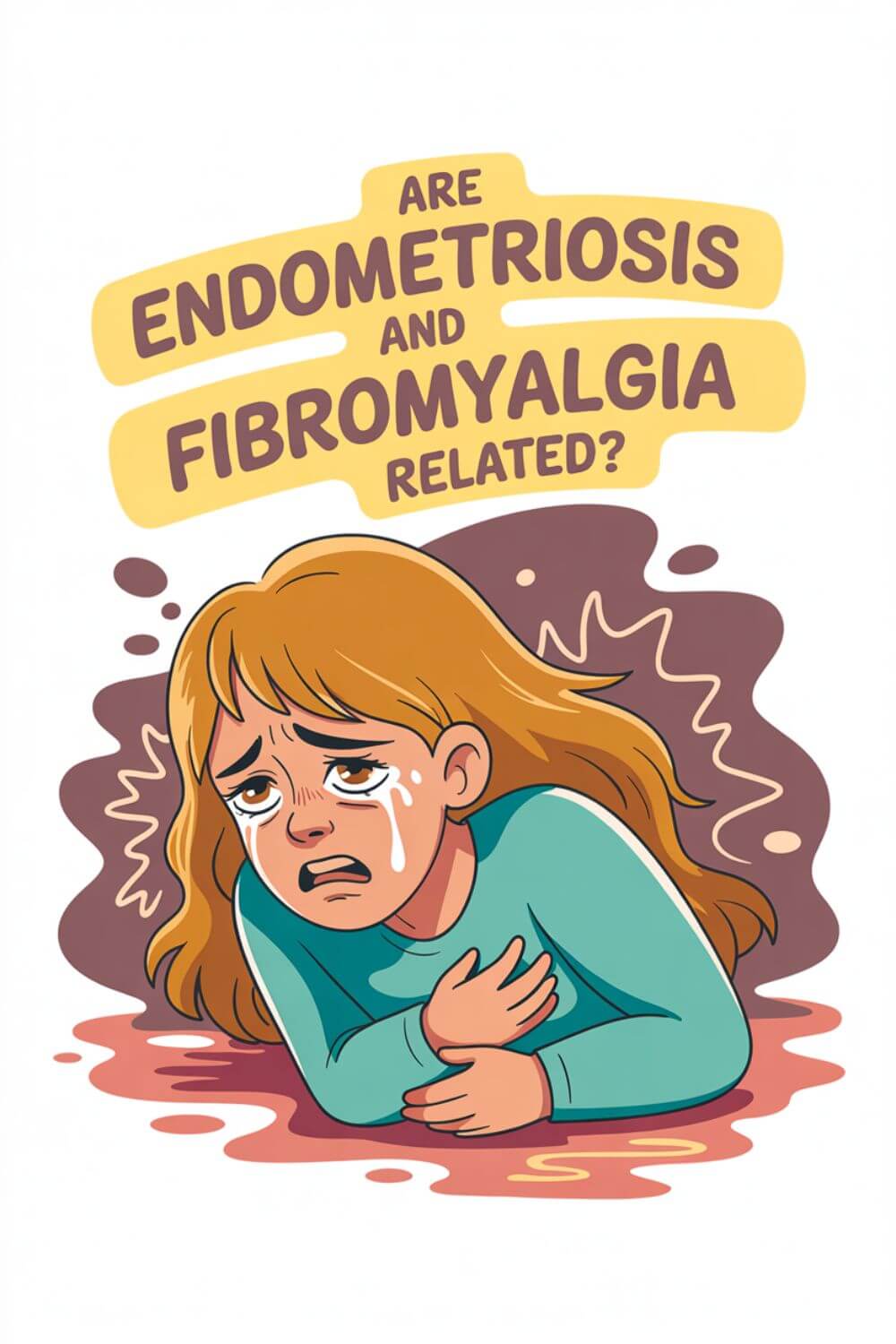
Emotional Impact When Two Chronic Illnesses Collide
When endometriosis and fibromyalgia collide in the same body, it’s not just her health that changes; it’s the rhythm of your entire life together. I’ve seen my wife go from moments of laughter to moments of sheer exhaustion in the space of an afternoon.
These illnesses don’t respect plans, celebrations, or even rest days. They demand everything without warning, leaving both of us scrambling to adjust.
The emotional weight isn’t just hers to carry. As a partner, you feel it too, though in a different way. I’ve felt helpless watching her wince at a pain she can’t describe, and frustrated when even rest doesn’t bring relief. Sometimes it’s the silence that gets to me most, the quiet moments when I can tell she’s holding back tears because she doesn’t want me to see her hurting again.
We’ve had to learn that it’s okay to grieve together for the life these illnesses have changed. That grief doesn’t mean we’ve given up; it means we care enough to feel the loss. But we also make space for joy in small ways, a favourite film on a bad pain day, cooking her comfort food when she can’t move much, or simply lying beside her so she doesn’t feel alone in the struggle.
The emotional impact shows up in your relationship’s foundation. Trust deepens when you’re both willing to be honest about how hard it is. Love grows stronger when it’s expressed not just in words but in small, consistent acts of care. And resilience builds when you face the unpredictability of each day as a team, rather than as two people fighting separate battles.
Understanding the emotional toll means accepting that your role isn’t to fix her, it’s to walk with her. You become her steady ground when the illnesses pull everything else from under her feet.
Misconceptions on Endometriosis–Fibromyalgia Connection
One of the hardest parts of supporting my wife through both endometriosis and fibromyalgia is hearing the misconceptions people believe about them. I’ve lost count of how many times someone has suggested her pain is “just stress” or that “she’d feel better if she exercised more.” These assumptions not only dismiss her reality but also add an extra layer of emotional burden.
Even some medical professionals struggle to acknowledge the connection between the two conditions. They might focus on one diagnosis and ignore the other, as if treating them separately will somehow solve the whole problem. But that approach often leaves her symptoms unmanaged and her voice unheard.
I’ve learned that part of my role is to challenge these misconceptions, not aggressively, but firmly and with facts. Whether it’s a friend who doesn’t understand why she cancels plans or a doctor who brushes off her concerns, I make it clear to him that both illnesses are real, they can coexist, and they deserve equal attention.
Breaking these misconceptions also means being careful with my own words. I’ve had to unlearn the instinct to say, “You’ll be fine” or “It’s probably nothing.” Instead, I try to say, “I believe you,” or “What can I do right now to help?” That shift alone has made her feel less isolated in her pain.
The truth is, the world will always have people who misunderstand chronic illness. But in our home, we’ve made a pact that her body and her experience are valid, no matter what anyone else believes. And if I have to be the one reminding her of that on the hard days, then that’s what I’ll do.
Next, we’ll explore how the overlap between these illnesses shapes daily life, and how recognising the signs can change the way you both navigate them.
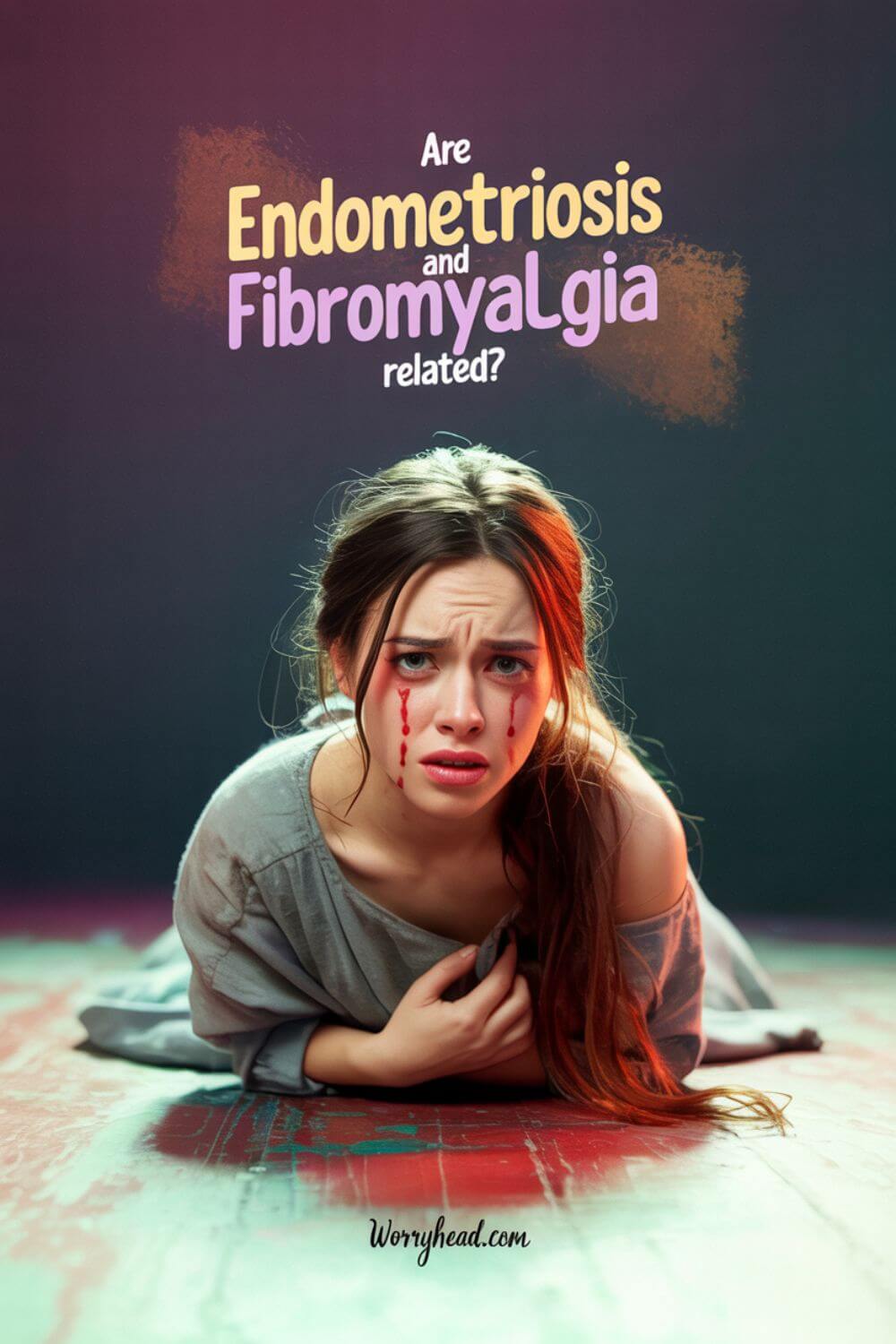
How Does the Link Between Both Affect Daily Life?
When endometriosis and fibromyalgia exist together, daily life becomes a balancing act with no clear rules. Every morning starts with a quiet question in my mind – what kind of day will this be for her?
Some days, she can get out of bed with only mild discomfort. Other days, even the smallest movement feels like a battle.
I’ve noticed that when one condition flares, the other often follows. A bad endometriosis day might trigger fibromyalgia fatigue and body aches, making even the simplest tasks overwhelming. This unpredictability means we’ve had to build flexibility into everything, from meal planning to social commitments, because we never know when her symptoms will change.
It’s not just about physical limitations.
Pain drains energy, and fatigue steals focus. I’ve seen how this affects her confidence and mood, sometimes making her feel like she’s letting people down. My role, as I see it, is to remind her that her value isn’t measured by productivity or how many things she can check off a list.
Daily life with both illnesses means planning ahead while also being ready to throw the plan out entirely. It means always having a backup for the backup. And it means recognising that success on some days is simply making it through without her pain consuming everything.
For us, little adjustments matter. I’ve learned when to step in and take over cooking, cleaning, or even answering the phone when she’s too tired to talk. These small acts might seem insignificant, but they make the difference between her surviving the day or feeling completely overwhelmed.
This link doesn’t just shape her life; it shapes mine too. It’s taught me patience, made me more observant, and shown me the value of slowing down. We’ve learned to treasure the good days and to meet the bad days with understanding instead of frustration.
Signs She May Have Endometriosis and Fibromyalgia
Looking back, the signs were there long before both diagnoses were confirmed. She had intense pelvic pain that didn’t match a normal cycle, deep muscle aches that seemed to move without reason, and fatigue that sleep never fixed. At the time, we didn’t connect them. We thought they were separate problems, unrelated.
Over time, patterns emerged. Her endometriosis pain often flared before or during her period, but her fibromyalgia symptoms could strike any time, sometimes triggered by stress, weather changes, or even lack of sleep. I began to notice how one set of symptoms seemed to amplify the other.
Other clues appeared in smaller ways: her sensitivity to touch when fibromyalgia made her skin feel tender, the headaches that followed intense pelvic pain, or the sudden exhaustion after doing something as simple as running errands. These weren’t isolated events; they were part of a bigger picture.
Recognising the signs early can be the first step toward getting proper care.
It also helps partners like us to be more understanding. When you see the patterns, you can prepare for them. You can create space for her to rest, adjust expectations, and protect her from situations that might make her symptoms worse.
Knowing these signs doesn’t mean you can prevent the illnesses from flaring. But it does mean you can walk beside her with more awareness, ready to support her in ways that truly matter.
Next, we’ll look at how to research the connection without overwhelming her, and how inflammation ties these two conditions together in ways that can’t be ignored.
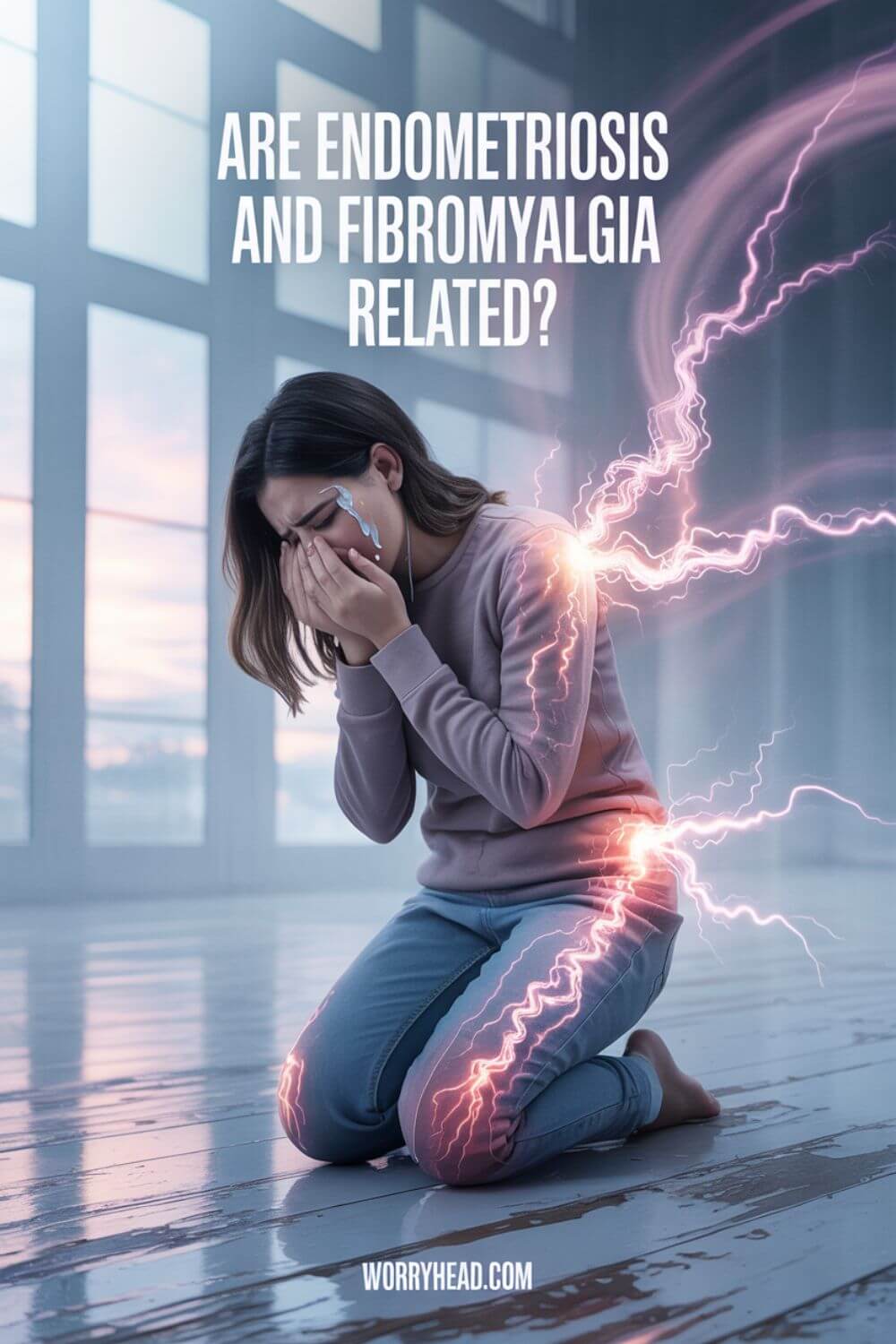
Researching the Link Without Overwhelming Your Partner
When I first started looking into the connection between endometriosis and fibromyalgia, I made the mistake of diving too deep, too fast, and then unloading everything I’d found onto my wife. What I thought was being helpful actually left her feeling more anxious and weighed down. I learned quickly that research isn’t just about gathering facts, it’s about how and when you share them.
Now, I take a slower approach. I read articles, medical journals, and patient stories, but I filter them before bringing anything to her. I ask myself, Will this help her feel supported, or will it make her feel like she’s drowning in more information she can’t use right now?
Sometimes, I’ll summarise one or two key points instead of overwhelming her with everything at once.
I’ve also learned that timing matters. If she’s in the middle of a flare-up, that’s not the moment to discuss new research or treatment options. Instead, I’ll wait for a calmer day, when she has the energy to engage in the conversation without feeling pressured to make decisions.
Another thing I realised is that my job isn’t to be her doctor, it’s to be her partner. I’m there to bring her useful information, not to replace her own knowledge or instincts about her body. That means asking her if she even wants to hear about something before I launch into it.
By taking this gentler approach, I’ve found that our conversations about research are more productive and less stressful. She knows I’m invested in understanding her illnesses, but she also knows I respect her mental and emotional boundaries.
Inflammation Connection in Endometriosis and Fibromyalgia
The more I’ve read, the clearer it’s become that inflammation plays a huge role in both endometriosis and fibromyalgia.
In endometriosis, inflammation can occur around the lesions and in the pelvic cavity, contributing to pain and other symptoms. In fibromyalgia, researchers believe inflammation in the nervous system may heighten pain sensitivity across the body.
For my wife, this means her pain is often a mix of localised and widespread sensations. When endometriosis flares, the inflammation can make her fibromyalgia worse, and vice versa. It’s like her body is caught in a loop, where one condition feeds the other.
Understanding the inflammation connection has helped me think differently about her care. It’s why we’ve focused more on anti-inflammatory habits—eating nutrient-rich meals, reducing stress where we can, and making sure she has enough rest. While these things can’t cure either condition, they sometimes ease the intensity of her flares.
It’s also changed how I respond emotionally. On bad days, I remind myself that her pain isn’t random; it’s the result of processes happening inside her body that she can’t control. That perspective helps me replace frustration with compassion and impatience with patience.
Recognising this shared inflammatory pathway makes the link between these illnesses feel undeniable. And knowing this has given me one more tool in being the kind of partner she can rely on—someone who understands not just the pain she feels, but why it might be happening.
Next, we’ll explore why some doctors still dismiss the connection and how to respond when that happens, and how awareness can transform your role as her partner.

Why Some Doctors Dismiss the Link & How to React?
One of the most frustrating parts of navigating my wife’s endometriosis and fibromyalgia has been watching doctors dismiss the idea that the two could be linked.
Some simply say there’s “not enough evidence,” while others focus solely on the condition they specialise in, ignoring symptoms that don’t fit neatly into their field. For us, this has meant repeated appointments where she’s had to start from scratch, telling her story over and over, only to walk out without real answers.
At first, I stayed quiet in those moments, trusting the professionals. But over time, I realised that silence wasn’t helping.
Now, I go into appointments prepared with notes on her symptoms and her patterns we’ve noticed, and questions that keep the conversation focused. If a doctor brushes off the connection, I don’t argue aggressively, but I do respectfully push back. I’ll say things like, “We’ve noticed that when her endometriosis flares, her fibromyalgia symptoms worsen. Can you help us understand why that might happen?”
It’s not about proving them wrong; it’s about making sure they acknowledge her experience. Sometimes that means asking for a second opinion, or even switching doctors. I’ve learned that it’s okay to walk away from a medical professional who isn’t willing to listen.
Reacting to medical dismissal is also about supporting her emotionally afterward. These moments can make her feel invalidated and defeated, so I make sure to remind her that her pain is real and that we’ll keep looking until we find someone who takes it seriously. The truth is, doctors are human, and not all of them will see the full picture, but that doesn’t mean the picture isn’t there.
How Awareness Improves Your Role as a Partner?
Understanding the overlap between endometriosis and fibromyalgia has transformed the way I show up for my wife. Awareness means I’m not just reacting to her pain in the moment – I’m anticipating it, adjusting our plans before she even has to ask, and creating an environment that feels safe and supportive.
It’s in the little things, like noticing when she’s quieter than usual and offering to take over tasks so she can rest. It’s recognising that her symptoms might not look the same every time, and that one “good day” doesn’t mean she’s cured or suddenly able to push herself without consequences.
Awareness also gives me confidence when advocating for her. I can walk into a medical appointment and clearly describe her patterns and history, making it harder for her symptoms to be brushed aside. It’s given me the language to talk to friends and family about her illnesses in a way that educates them and protects her from insensitive remarks.
Most importantly, it’s deepened our connection. She knows I’m not just watching from the outside, I’m actively learning, adapting, and standing beside her in every part of this journey. And in a world that often misunderstands chronic illness, being truly seen and believed can be as powerful as any treatment.
Next, we’ll bring all of these insights together, summarising what each part means for partners like us and how understanding this link can reshape your relationship.
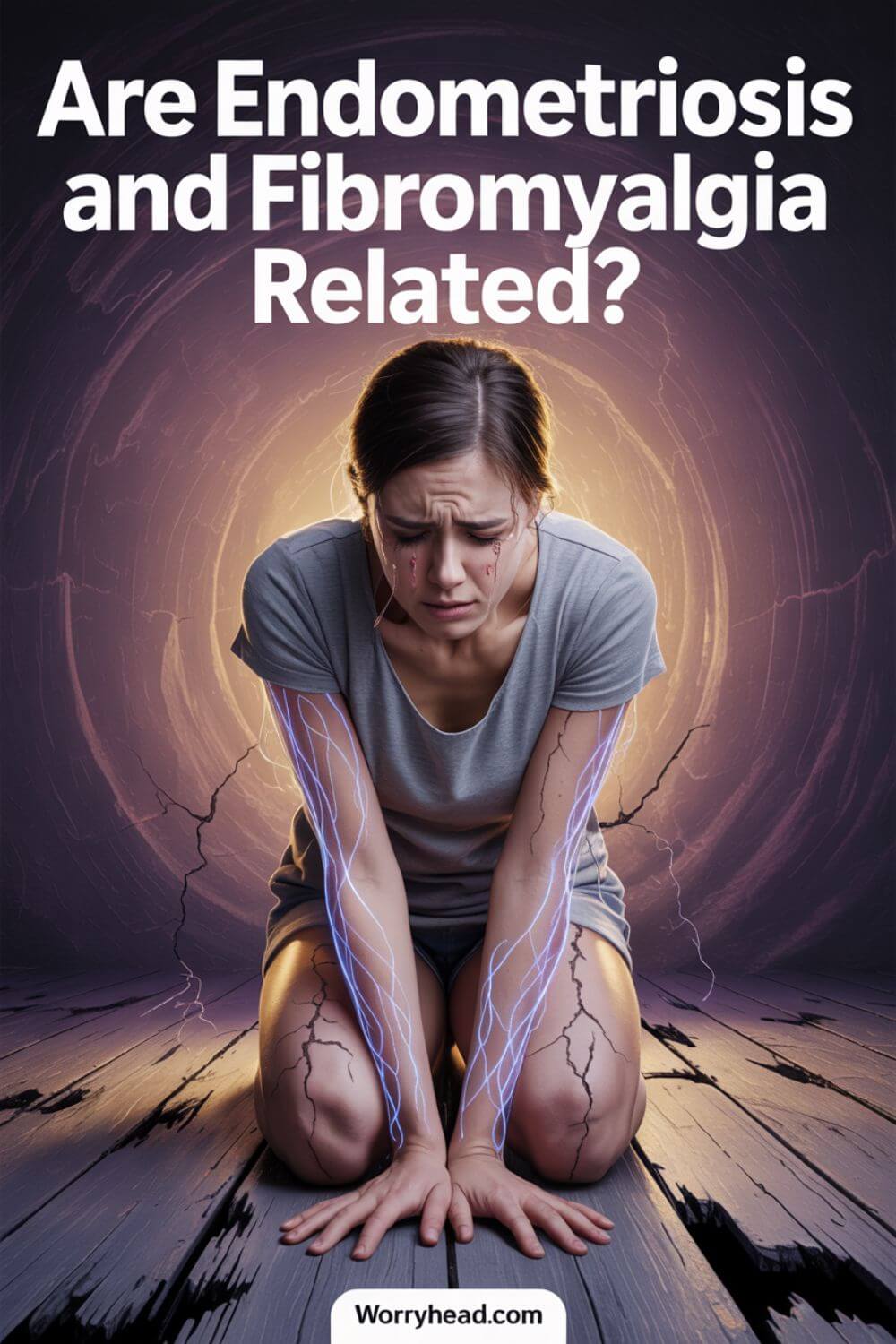
Conclusion on the Endometriosis–Fibromyalgia Connection
If there’s one thing I’ve learned on this journey, it’s that understanding whether are endometriosis and fibromyalgia related goes far beyond a medical question; it’s a lived reality for couples like us.
I’ve watched my wife fight through days when both illnesses seem to conspire against her, and I’ve felt the helplessness of wanting to take the pain away but knowing I can’t. What I can do is stay by her side, learn everything I can, and make sure she never feels like she’s facing it alone.
This connection is real, even if not every doctor or researcher will admit it yet. The overlapping symptoms, widespread pain, crushing fatigue, inflammation, and mental health strain, are impossible to ignore when you see them in someone you love.
For my wife, they’re part of every day, shaping her choices, her energy, and sometimes her sense of self. For me, they’re a reminder that my role isn’t to fix her but to protect her peace, to make her life easier wherever I can.
Living with both conditions in our relationship has taught me that the real challenge isn’t just managing symptoms, it’s managing the impact those symptoms have on your life together. The plans you cancel, the adjustments you make, the way you learn to measure time in moments rather than milestones.
We’ve had to slow down, to let go of the idea that life has to look a certain way, and to focus instead on building a version of life that works for us.
And that’s where the real hope is. Awareness gives you power. It lets you anticipate bad days, appreciate good ones, and create a safe, supportive space that makes her feel understood. It strengthens your relationship because it forces you to communicate, to adapt, and to love in ways you might never have thought of before chronic illness entered your world.
I won’t pretend it’s easy. Some days are hard in ways I can’t put into words. But every time she looks at me and I know she feels safe, seen, and loved despite the pain, I know we’re doing something right.
This connection between endometriosis and fibromyalgia may never fully go away, but neither will my commitment to walking beside her through all of it.
In the end, that’s the real answer to the question – yes, they’re connected. But more importantly, we are connected, and that’s what makes the difference.
Even in the hardest seasons, you can still build a life filled with love, patience, and moments of joy when you commit to truly understanding and supporting each other.
I’d love to hear your thoughts, so leave a comment below and share your story. And if you’d like to go deeper, you can check out the FREE chapter of my eBook, written to help partners like us navigate this journey together.


About Me
Hi, I’m Lucjan! The reason why I decided to create this blog was my beautiful wife, who experienced a lot of pain in life, but also the lack of information about endometriosis and fibromyalgia for men…
READ MORE